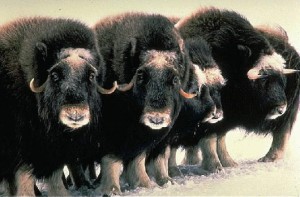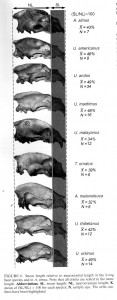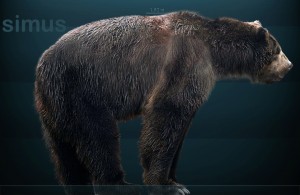In an earlier post about the effects of climate change I made the point that there is a lack of intellectual honesty in the political climate change debate and a comment on that article provides a perfect example.
The commenter quoted an opinion piece by Gerald Warner. Mr. Warner cites population estimates by the International Union for Conservation of Nature (IUCN) Polar Bear Specialist Group that summarizes 19 sub-populations of bears. The summary of the population status is that 8 are declining, 3 are stable, 1 is increasing, and the other 7 are unknown. They currently estimate a world population of approximately 25,000 individuals. (See the footnote)
The most flagrant claim made by Mr. Warner is “the actual statistics” that since 1970 polar bear population has quintupled from 5,000 to an estimated 25,000 individuals.
A quick search revealed an article by Terence Jeffrey that gives at least partial references for “the actual statistics.” In his article, Jeffrey relates a history of scientific polar bear population estimates over the last five decades. An honest reading of his article shows that less was known early on and with increased efforts made to study polar bear numbers, we have better estimates now. Who would have guessed?
Quoting from Jeffrey, in 1965 world population of polar bears was estimated to be “5,000 to 8,000 animals,” “over 10,000” or “17,000 to 19,000 animals.” So, the apparent basis of “the actual statistics” of Mr. Warner comes from the extreme lowest estimate of bear populations in the 1960s to the estimate of the modern populations to get a quintupling. I am not sure in which universe this counts as “actual statistics.”
All of this clearly demonstrates one of the main points I made in the earlier story—the dishonest manipulation of scientific information for the express purpose of confounding the public is all too common in the political debate of climate. I am afraid it is only going to get worse, and my stated hope for intellectual honesty in politics is looking less likely all the time.
International Union for Conservation of Nature (IUCN) Polar Bear Specialist Group. http://pbsg.npolar.no/en/index.html
Jeffrey, T. 2008. The great polar bear population puzzle. http://www.humanevents.com/article.php?id=26627
Warner, G. 2010. Climategate: two more bricks fall out of the wall of deceit—rainforests and polar bears. http://blogs.telegraph.co.uk/news/geraldwarner/100030204/climategate-two-more-bricks-fall-out-of-the-ipcc-wall-of-deceit-rainforests-and-polar-bears/
Footnote: I wanted to examine the trends in the known population numbers a bit more as given by the IUCN, so here are some observations. Of the 19 sub-populations, they currently estimate the population of 14 and declare a status for 12 of them. By taking an average of the high and low population estimate for each of the given areas, the sum is 18,461.5 bears. This is the sum of the averages for all the estimated areas. There are 5 areas with un-estimated populations, so there are more bears in the world. Plus, the average may not be the best estimate for each area and is no doubt low for some areas and high for others. So, a total global estimate of 25,000 is reasonable enough.
If we sum the estimated populations by status (declining, increasing, stable, and unknown) we see that 52% of the known population is classed as declining; 2% are classed as increasing; 19% are classed as stable; and 28% have an unknown status.
So, over half the known population of polar bears are in declining populations. More than a quarter are unknown as to their population status. Almost 20% appear at this time to be stable in population numbers, and 2% seem to be increasing. I fail to see how anyone could construe these data to say that “polar bears appear to thrive on warming” (quote from Warner).



